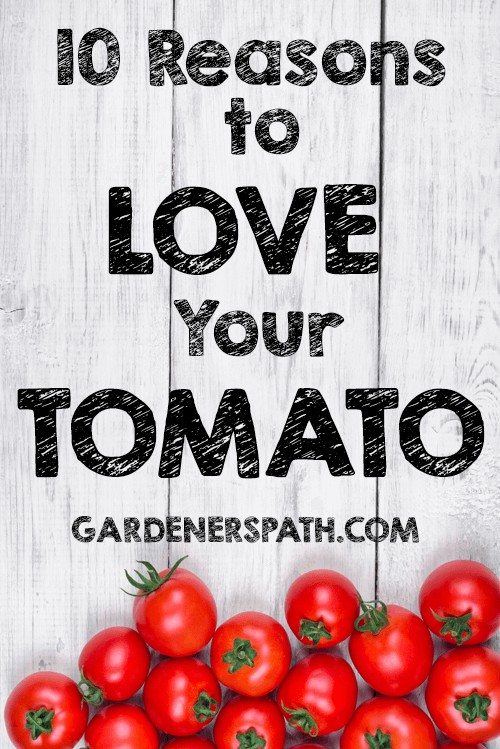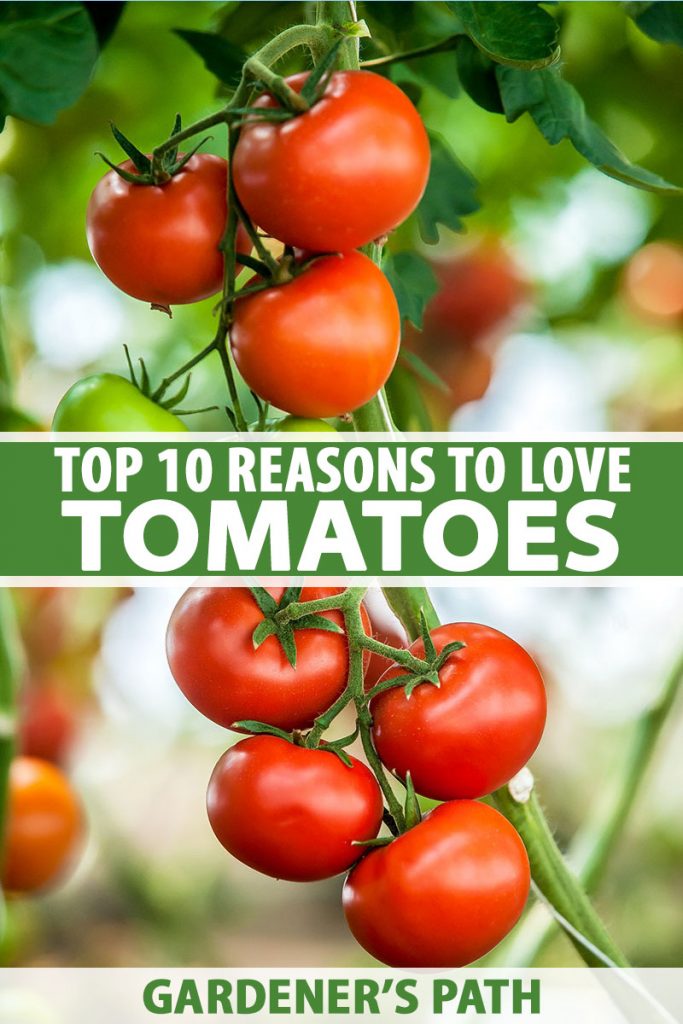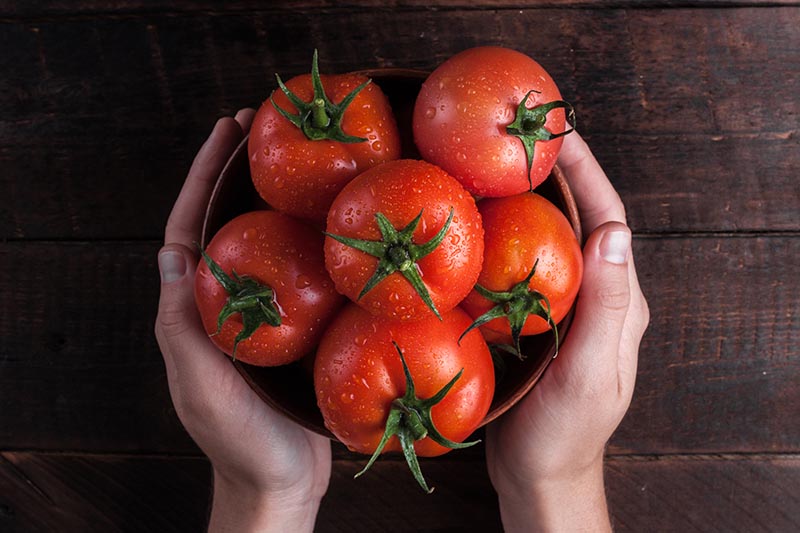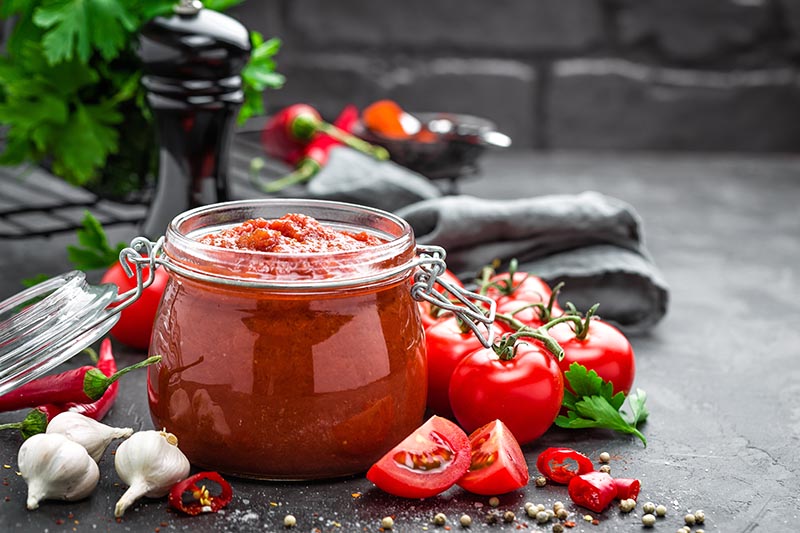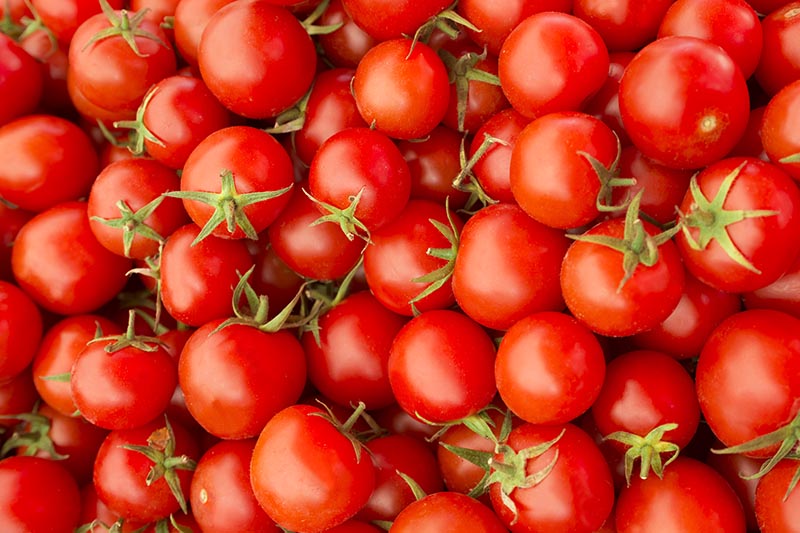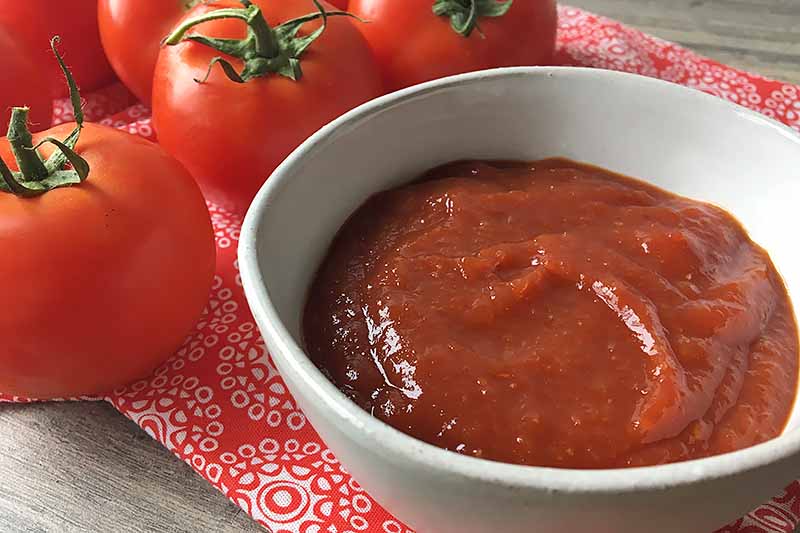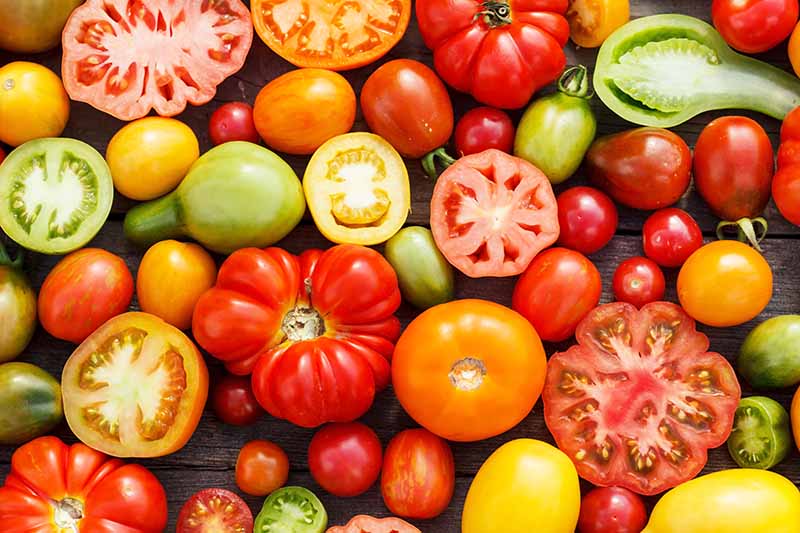If I close my eyes, I can almost taste a sun-ripened tomato freshly picked from my parents’ garden. Whether you enjoy them juicy and fresh, or prefer them in the form of ketchup or homemade sauce, I think we can all agree that they’re superb. What you may not know is that they also pack a nutritional punch! We link to vendors to help you find relevant products. If you buy from one of our links, we may earn a commission.
The Top 10 Reasons to Love Tomatoes
You’ve probably heard it’s a good idea to eat more fruits and vegetables to stay healthy. But what specifically is it about tomatoes that makes them such a valuable “health food?”
Full of essential nutrients and offering various health benefits, here are the key features of this garden favorite.
1. Better Eyesight
Carotenoids in these fruits help to give them their color, and these are converted to vitamin A in the body. One average sized tomato contains around 20% of your daily recommended value of vitamin A. This nutrient is a component of the protein rhodopsin, which helps our retinas absorb light, a key factor in our ability to see. A deficit of vitamin A in the diet can lead to night blindness, whereas getting enough carotenoids that can be converted into rhodopsin helps to improve our vision.
2. Cell Growth
Additionally, vitamin A plays a role in cell growth. Not only is this vitamin vital to the growth of a developing fetus, it plays a key role in growth and development throughout our lives. Sure, keep encouraging your kids to eat their spinach if they want to grow big and strong. But urge them to eat their tomatoes too!
3. Collagen Production
Vitamin C plays a role in producing collagen, a protein found throughout the connective tissue in our bodies. And one medium tomato contains about 28% of your daily value of vitamin C on average. Collagen helps to give our skin, bones, ligaments, tendons, and muscles structure.
4. Fluid Balance
A component of common table salt, chloride is an electrolyte that is important for maintaining fluid balance in the body. The average tomato also contains around 250-300 milligrams of potassium. Potassium flows between the inside and outside of our cells to maintain a proper balance of fluids. This pumping of potassium also allows muscle contractions to occur, including the beating of our hearts.
5. Immune Support
Vitamin C also supports the immune system, and it acts as an antioxidant to combat harmful free radicals in the body, to boot. Carotenoids that are converted to vitamin A in the body also help to support the immune system, activating T cells that fight infection.
6. Improved Digestion
The average medium-sized tomato contains 1-2 grams of dietary fiber, most of which is insoluble. This type of fiber does not dissolve in water (unlike soluble fiber, like what you’ll find in oats and bananas), and it cannot be digested by our bodies. Insoluble fiber is found in various types of whole grains and produce, and it helps to keep our digestive processes regular. Chloride, a mineral that I already mentioned previously, is also an important element of stomach juices, which help to digest food.
7. Reduced Blood Pressure
Lycopene is an antioxidant found in tomatoes that contributes to their red color, and studies have shown that lycopene may help to reduce blood pressure. Though more research is needed to confirm these effects, a meta-analysis of 12 studies related to the effect of lycopene intake on blood pressure, conducted between 1955 and 2010, suggests that doses of lycopene at or above 25 milligrams per day are effective in reducing LDL cholesterol by about 10%.
This is a level comparable to the effect of low doses of statin drugs in patients with slightly elevated cholesterol levels. How many tomatoes do you need to eat to make sure you’re getting at least 25 milligrams of lycopene in your diet per day? Translating this quantity to what you may consume via products like ketchup, or from those fresh from the garden, can be a bit complicated. Store bought ketchup contains about 10-13 milligrams of lycopene per 100 grams – but that’s about 18 or 19 packets of ketchup for those who are counting, and the sodium content would no doubt be off the charts if you ate that much in one sitting.
Fortunately, homemade products like cooked sauces and salsas often contain much less sodium than what you’ll find in something from the grocery store. Fresh, on the other hand, they contain significantly less lycopene, in a quantity that ranges from under one milligram to about 7 milligrams per 100 grams of fresh tomato. This translates into about 3 “average-sized” cherry tomatoes. But keep in mind that this variation in the amount of lycopene is in large part due to the fact that something like ketchup is a concentrated product, whereas fresh fruit contain a large quantity of water.
8. Reduced Cholesterol
Lycopene has also been shown to have cholesterol-lowering effects. It specifically lowers LDL cholesterol, the kind your doctor is always asking you to keep down.
It is important to note that a consistent high intake is needed to achieve these effects from lycopene – as described above, fresh tomatoes and cooked products can contain varying amounts. So keep eating them, whenever you get a chance!
9. Reversed Smoking Damage
A 2017 study showed that diets high in tomatoes and other fruits, such as apples, helped to reduce the decline in lung function that ex-smokers usually experience. Keep in mind that this was just one study, and tomatoes are not a magical cure – the best way to avoid lung damage caused by smoking is to avoid smoking! But they could potentially help, when the damage has already been done. The study showed that these perks came specifically from consuming them and other fruits fresh, yet another reason to add tomatoes to your garden.
10. Skin Benefits
Studies have shown that consuming tomatoes may help to provide protection against the damaging effects of UV rays from the sun. But this evidence is limited, and most controlled, double-blind studies to date have been small. Definitely continue to use your sunscreen and wear appropriate sun protection in the garden! Eating a few additional tomatoes in the summertime as well couldn’t hurt. Some beauty gurus claim that putting extracts directly onto the skin can reduce UV damage, minimize pores, and increase brightness. But there is no concrete scientific evidence to back these particular claims thus far.
Need More Tomatoes in Your Life?
These fruits are wonderful because they can be enjoyed in many forms. Raw, stewed, juiced, pureed… the list goes on and on! They can be turned into a plethora of canned products and condiments as well, like salsas, sauces, and (arguably most importantly) ketchup. They actually have varied nutritional profiles depending on whether they are fresh or raw, meaning you can get different benefits from enjoying both! Cooked products like a homemade canned sauce made with homegrown paste tomatoes, tend to be higher in lycopene. Picking fresh cherry varieties and using them to top a green salad, or making a delicious caprese with a beautiful heirloom, usually offers higher levels of vitamin C. Putting more tomatoes on your plate is a simple way to add more nutritional value to your diet, however you choose to do it. Stir a homemade paste into a sauce, or enjoy a glass of juice with breakfast. If you’re in the full tomato spirit, try a simple marinara sauce like this one, from our sister site, Foodal. Or give a batch of homemade ketchup a whirl – you can find this recipe on Foodal as well. Growing your own in the garden can be highly rewarding, and it’s so easy to add more to our diets when ripe and healthy fruits are readily available, just outside in the raised beds, or growing in containers on the patio.
When you’re harvesting your crop, if you’re growing red cultivars, you want to look for at least a bit of red color on the fruit before you pick it from the vine. Whether they are ripened on the vine or off, the nutritional value that they offer remains the same. Eating them when they are at the peak of ripeness offers the most health benefits. Have too many to eat all at once? Turn them into a canned sauce to savor through the cooler months! Interested in learning even more about growing your own tomatoes? Check out these articles next:
Cracked Fruit on the Vine: Are Split Tomatoes Safe to Eat? How to Grow Tomatoes from Seed in 6 Easy Steps 15 Best Heirloom Tomato Varieties for the Garden The Ultimate Way to Support Tomato Plants: Florida Weave
© Ask the Experts, LLC. ALL RIGHTS RESERVED. See our TOS for more details. Uncredited photos: Shutterstock. With additional writing and editing by Allison Sidhu. The contents of this article have been reviewed and verified by a registered dietitian for informational purposes only. This article should not be construed as personalized or professional medical advice. Gardener’s Path and Ask the Experts, LLC assume no liability for the use or misuse of the material presented above. Always consult with a medical professional before changing your diet, or using supplements or manufactured or natural medications.
